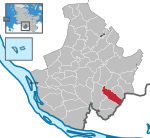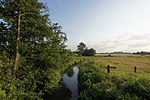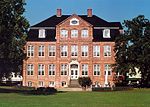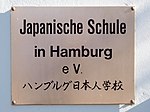Thesdorf station
1967 establishments in West GermanyBuildings and structures in Pinneberg (district)Hamburg S-Bahn stations in Schleswig-HolsteinRailway stations in Germany opened in 1967Schleswig-Holstein building and structure stubs

Thesdorf station is on the Hamburg-Altona–Kiel line and is a railway station served by the city trains of the Hamburg S-Bahn. The railway station is located in the town Pinneberg in the district of the same name, in Schleswig-Holstein, Germany.
Excerpt from the Wikipedia article Thesdorf station (License: CC BY-SA 3.0, Authors, Images).Thesdorf station
Bei der Schmiede, Pinneberg
Geographical coordinates (GPS) Address Nearby Places Show on map
Geographical coordinates (GPS)
| Latitude | Longitude |
|---|---|
| N 53.643888888889 ° | E 9.8144444444444 ° |
Address
Thesdorf
Bei der Schmiede
25421 Pinneberg, Thesdorf
Schleswig-Holstein, Germany
Open on Google Maps









